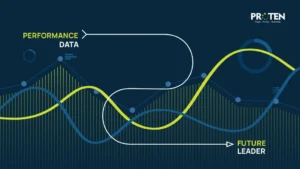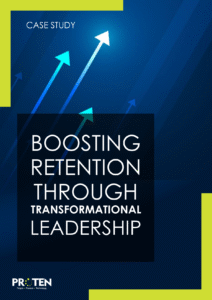Effective performance management is the backbone of any successful organization. It’s a continuous process that helps employees develop their skills, reach their full potential, and align their work with the company’s goals and objectives. Performance management increases productivity, employee engagement, and retention when done correctly. However, many organizations struggle to implement an effective performance management system, leading to disengaged employees and poor performance.
According to a 2020 Gallup survey, only 14% of employees strongly agree that their performance management process helps them improve their work. This statistic highlights the need for organizations to revamp their performance management strategies and focus on creating a system that supports employee growth and development. As a leading HR consulting enterprise, Proten International is here to help you do just that. This article will examine the steps to include in your performance management system.
Goal-Setting: The Foundation of Performance Management.
The first act begins with clear, well-defined goals. Goal-setting is a critical component of performance management. Clear and specific goals help employees focus their efforts, prioritize tasks, and work towards common objectives. SMART (Specific, Measurable, Achievable, Relevant, and Time-bound) goals effectively ensure employees are working towards tangible outcomes. Well-defined goals also enable managers to provide targeted feedback and coaching, helping employees overcome obstacles and achieve their goals.
Regular Feedback and Coaching
Regular feedback and coaching are essential for employee growth and development. Managers should provide ongoing feedback that is specific, timely, and actionable, helping employees understand what they’re doing well and where they need improvement. Coaching helps employees develop new skills, build confidence, and overcome challenges. A study by Gartner found that employees who receive regular feedback are three and a half times more likely to be engaged than those who do not receive regular feedback.
Performance Evaluations: A Two-Way Conversation.
Performance evaluations are another critical aspect of performance management. These evaluations provide an opportunity for employees to receive constructive feedback, reflect on their performance, and set goals for the future. It’s essential to make evaluations a two-way conversation, allowing employees to share their thoughts, concerns, and ideas. This open communication helps build trust, fosters a positive work environment, and encourages employee engagement.
Continuous Learning and Development
Continuous learning and development are vital for employee growth and performance improvement. Organizations should provide training opportunities, resources, and support to help employees develop new skills, stay up-to-date with industry trends, and advance in their careers. This investment in employees’ development demonstrates a commitment to their success and well-being, leading to increased job satisfaction, engagement, and retention.
Implementing an Effective Performance Management System
Implementing an effective performance management system requires a strategic approach. Organizations should:
– Define clear goals and objectives
– Establish a regular feedback and coaching culture
– Provide ongoing training and development opportunities
– Conduct regular performance evaluations
– Foster open communication and trust
By following these steps, organizations can create a high-performing workforce, increase employee engagement, and achieve their goals and objectives.
In Conclusion…
Performance management is a vital process that helps organizations achieve their goals and employees reach their full potential. By implementing effective goal-setting, regular feedback, performance evaluations, and continuous learning and development, organizations can create a high-performing workforce. Remember, performance management is a continuous process that requires ongoing effort and commitment.









